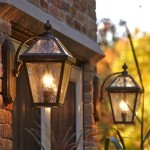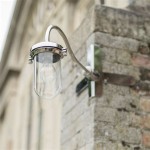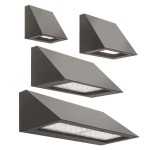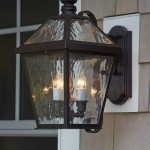What Is The Best Wood Glue For Outdoors?
Choosing the right wood glue for outdoor projects is crucial for ensuring long-lasting adhesion and durability. Outdoor conditions, such as exposure to moisture, temperature fluctuations, and UV rays, can significantly impact the performance of adhesives. While many wood glues are available on the market, only a select few are suitable for outdoor applications.
This article delves into the key factors to consider when selecting outdoor wood glue and provides insights into the best options available. Understanding the properties of different glues and their suitability for specific outdoor projects is essential for achieving successful and long-lasting results.
Factors to Consider When Choosing Outdoor Wood Glue
Numerous factors influence the choice of wood glue for outdoor use. Understanding these factors allows for a more informed decision:
1. Water Resistance
Outdoor wood glue must be highly water-resistant to withstand exposure to rain, humidity, and other forms of moisture. Water absorption can weaken the bond, leading to delamination or failure. Waterproof glues are designed to resist moisture penetration, ensuring a strong and lasting adhesion.
2. Temperature Resistance
Outdoor projects are subject to varying temperatures, from extreme heat to freezing conditions. Wood glue should be able to maintain its bond strength and performance across a wide temperature range. Temperature-resistant glues are formulated to resist thermal expansion and contraction, preventing bond failure due to temperature fluctuations.
3. UV Resistance
Ultraviolet (UV) radiation from the sun can degrade certain adhesives, causing them to yellow, become brittle, and lose their strength. UV-resistant glues are specifically designed to withstand the effects of UV exposure, ensuring long-term performance and maintaining the structural integrity of the project.
4. Bonding Strength
The bonding strength of wood glue is crucial for outdoor projects, as they often experience significant stress and strain. High-strength glues provide a durable and reliable bond that can withstand the rigors of outdoor use.
Types of Outdoor Wood Glue
Several types of wood glue are specifically designed for outdoor applications. Understanding their characteristics and applications helps in choosing the best option for a particular project.
1. Polyurethane Glue
Polyurethane glue is a highly versatile and durable adhesive commonly used for outdoor projects. It is known for its exceptional water resistance, temperature resistance, and bonding strength. Polyurethane glue expands as it cures, filling gaps and creating a strong bond, particularly in areas with uneven surfaces.
2. Epoxy Glue
Epoxy glue is another popular choice for outdoor applications, offering excellent water resistance, temperature resistance, and bonding strength. It is often preferred for projects requiring high-strength bonding and resistance to chemicals. Epoxy glue is available in various formulations, each offering specific properties tailored to different needs.
3. PVA Glue
Polyvinyl acetate (PVA) glue is a widely used wood glue suitable for both indoor and outdoor projects. While not as water-resistant as polyurethane or epoxy glues, PVA glue is still a reliable option for projects with moderate exposure to moisture. It is known for its ease of use and relatively low cost.
Choosing the Right Glue for Specific Projects
The choice of outdoor wood glue depends on the specific project requirements. Consider the following factors:
1. Moisture Exposure
Projects exposed to high moisture levels, such as decks, fences, and outdoor furniture, require highly water-resistant glues like polyurethane or epoxy. Moderate moisture exposure, such as wooden planters or birdhouses, can be handled with PVA glue.
2. Temperature Fluctuations
For projects experiencing significant temperature variations, polyurethane or epoxy glue is recommended due to their exceptional temperature resistance. PVA glue is suitable for areas with minimal temperature fluctuations.
3. UV Exposure
Projects exposed to direct sunlight require UV-resistant glues. Polyurethane and epoxy glues are generally UV-resistant, while PVA glue may degrade over time in intense UV conditions.
4. Bonding Strength
High-strength bonds are essential for projects experiencing significant stress, such as outdoor furniture or structural components. Polyurethane and epoxy glue offer superior bonding strength compared to PVA glue.
Conclusion
Selecting the best outdoor wood glue involves considering various factors, including water resistance, temperature resistance, UV resistance, and bonding strength. Polyurethane and epoxy glues are excellent choices for demanding outdoor projects, offering exceptional performance and durability. However, PVA glue can be a suitable option for projects with moderate moisture exposure and minimal temperature fluctuations.

Best Wood Glues Guide 2024 The Toughest For Woodworking

Finding The Best Wood Glue Craftsman Blog

Best Wood Glue For Strength And Durability Artnews Com

Best High Strength Wood Glue For Woodworking In 2024

Gorilla Wood Glue

Selecting The Best Glue For Your Woodwork Needs Buildworld

Titebond Iii Ultimate Glues And Adhesives Woodbond Pty Ltd

Top 5 Best Wood Glues Black Friday And Cyber Monday 2024

Best Wood Glue Pva More Gorilla

Titebond 8 Oz Quick And Thick Multi Surface Glue 12 Pack 2403 The Home Depot







